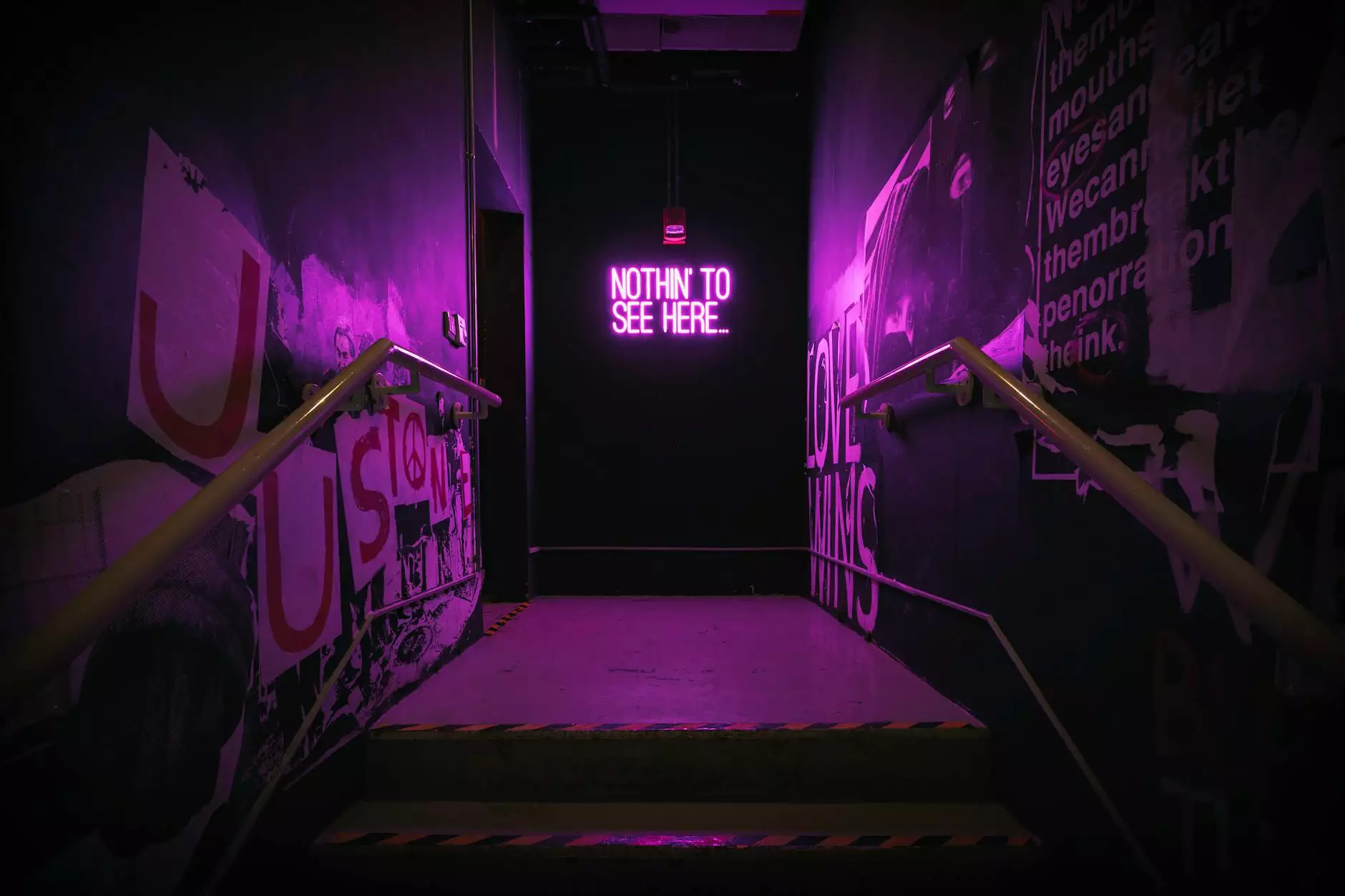Exploring the World of Light Installation Art

Light installation art represents a fascinating intersection of technology, creativity, and immersive experience. This innovative art form utilizes artificial light as a primary medium, transforming spaces and engaging audiences in uniquely profound ways. With roots in diverse artistic practices, light installations challenge our perceptions while inviting us to reconsider our relationship with light itself.
The Evolution of Light Installation Art
Over the past few decades, light installation art has evolved significantly, reflecting changes in technology and artistic trends. Initially emerging in the mid-20th century, artists began experimenting with neon and electric light, leading to a proliferation of styles and approaches.
Historical Context
The origins of using light in art can be traced back to various movements including the Light and Space Movement of the 1960s in Southern California, where artists like James Turrell and Robert Irwin redefined spatial boundaries and viewer perception. These pioneers set the stage for subsequent generations, encouraging an interactive dialogue between the audience and the artwork.
Technological Advancements
With the advent of new technologies, such as LED lights and digital projections, light installation art has gained new dimensions. Artists can now manipulate colors, intensity, and movement with an unprecedented level of control, creating dynamic installations that change over time and engage contemporary audiences.
The Impact of Light Installation Art on Audience Experience
One of the most compelling aspects of light installation art is its ability to alter perceptions and emotional responses. This art form invites viewers to immerse themselves in an environment that transcends traditional boundaries of viewing art.
Spatial Transformation
Artists often utilize installations to transform ordinary spaces into extraordinary experiences. By strategically placing light sources, they can manipulate the visibility of architectural features, shadows, and textures, fundamentally changing how viewers perceive the environment around them.
Emotional Engagement
Light has a profound effect on human emotion and mood. The use of color in light installation art can evoke feelings ranging from tranquility to excitement, enabling an emotional connection that might not be achieved through other artistic mediums. For example, a warm yellow light might create feelings of warmth and comfort, whereas stark blue lighting could invoke a sense of calm or introspection.
Notable Artists in Light Installation Art
The realm of light installation art is populated by an array of talented artists who have made significant contributions to the field. Below are a few pioneers and contemporary leaders:
1. Grimanesa Amorós
Grimanesa Amorós is a renowned artist whose work emphasizes cultural and historical narratives through light. Her installations often incorporate elements of her Peruvian heritage, merging art with storytelling. With a focus on community engagement, Amorós utilizes light to provoke thought and discussion around identity and place.
2. Olafur Eliasson
Known for his large-scale installations that blend natural phenomena with technological innovation, Olafur Eliasson uses light as a primary element to immerse viewers in enchanting experiences. His work, such as “The Weather Project,” challenges perceptions of light and our interaction with it.
3. Jenny Holzer
Jenny Holzer famously integrates text with light, creating thought-provoking installations that convey powerful messages. Her use of LED technology in public spaces allows her to share her compelling narratives with diverse audiences, merging literature and visual art.
Creating a Light Installation
For those interested in branching into light installation art, understanding the process of creation is essential. Below are the key steps involved in producing a light installation:
Step 1: Concept Development
Begin with a strong concept or theme that resonates with you. Consider the message you want to convey and how light can enhance that narrative. Engage in extensive research to gather insights and inspiration.
Step 2: Planning and Design
Draft a detailed plan of your installation. This should include the selection of materials, types of light sources, and the physical space where you will install the artwork. Be sure to consider how viewers will interact with the installation.
Step 3: Technical Considerations
Incorporate the necessary technology for your installation. How will you power the lights? Will you use programmable lighting? Addressing these questions will ensure a seamless execution of your artistic vision.
Step 4: Installation Process
Set up the installation according to your design specifications. Pay close attention to the placement of lights and their interaction with surrounding elements. Test the installation from various angles to ensure a cohesive viewer experience.
Step 5: Inviting Audience Engagement
Once completed, invite audience members to interact with your work. Consider hosting an opening event to generate interest and encourage dialogue around your piece.
Exploring the Challenges of Light Installation Art
While exhilarating, creating light installation art comes with its share of challenges. Understanding these hurdles can help aspiring artists navigate the complexities involved:
1. Technical Difficulties
Working with technical components can often present challenges, particularly as technology evolves at a rapid pace. Artists must stay informed about the latest advancements to enhance their work effectively.
2. Environmental Factors
Installation venues can introduce unforeseen variables, including existing lighting conditions, public access, and weather considerations for outdoor installations. Thoughtful planning and flexibility are essential.
3. Communicating Ideas
Conveying complex ideas through visual light installations can be challenging. Artists must be adept in creating clear narratives and experiences that resonate with a broad audience.
The Future of Light Installation Art
As society becomes increasingly intertwined with technology, the future of light installation art is promising. Innovations in digital light, augmented reality, and interactive installations are paving the way for new possibilities. Artists can explore themes of sustainability, societal issues, and personal identity through the lens of light.
Embracing Interactivity
A trend towards more interactive installations is evident as artists seek to engage audiences on deeper levels. By allowing viewers to modify or participate in the experience, artists can create a dialogue that enhances understanding and appreciation.
Community Engagement and Public Art
Public art installations will continue to play a crucial role in urban revitalization and community engagement. As cities integrate art into public spaces, light installation art has the potential to catalyze important social conversations and foster community pride.
Conclusion
Light installation art serves not only as a transformative medium but also as a vital component of contemporary artistic expression. It invites viewers into a world where the boundaries of light and space blur, creating a sensory experience that inspires, challenges, and uplifts. As we move forward, the continued exploration of light in art will undoubtedly illuminate new paths—both literally and figuratively—for artists and audiences alike.
For a closer look at the vibrant world of light installation art, visit Grimanesa Amorós' website to explore her captivating works, exhibitions, and projects that highlight the power of light in contemporary art.









